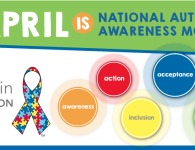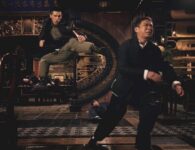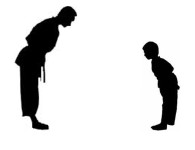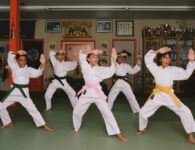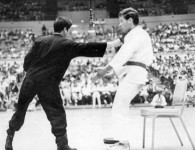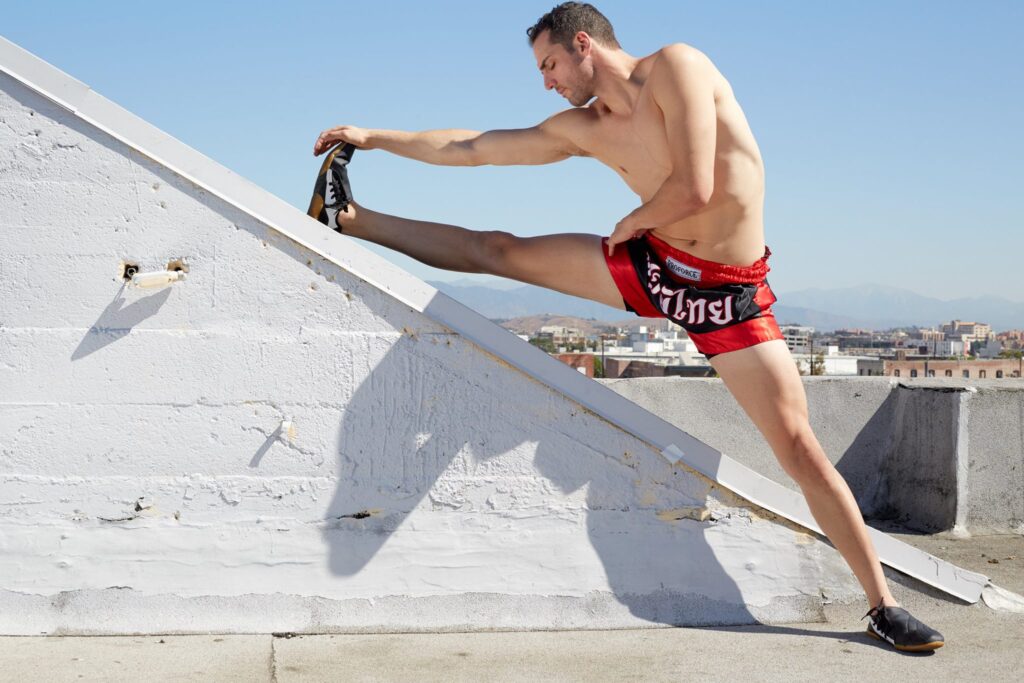
Parkour and martial arts aren’t exactly the same, but they do have some interesting common ground. They’re both popular hobbies and forms of exercise for people who don’t love traditional gym workouts. They’re both disciplines that encourage practitioners to think about the way that they move in the world, how to be aware of their surroundings, and how to engage with their surroundings if necessary. And they both make action scenes in movies look amazing.
Just how deep does this connection run, though? Can parkour be a good form of cross-training for martial artists? Can martial arts be a good form of cross-training for parkour? Is parkour actually a martial arts?
Let’s take a deeper look at the relationship between martial arts and parkour.
Is parkour a martial art?
The short answer is not quite.
Parkour and martial arts are both movement philosophies and training systems that develop your mental and physical strength, agility, endurance, flexibility, coordination, and overall awareness. The training for both disciplines involves some mix of movements like running, jumping, and rolling. They both foster confidence, mindful movement, and a sense of community. And they both originate from military training.
The differences between parkour and what can be considered a true martial art, though, are their goals and purposes. Martial arts were, like the name suggests, developed for hand-to-hand combat and weapons training. Parkour was first used as an obstacle course-based training regimen for the military. It helped soldiers develop the strength and conditioning for battle — and the ability to navigate their surroundings during battle — but not for the actual battle. And while they both encourage their students to think outside the box and approach situations in a new light, parkour involves assessing your environment and figuring out how to respond to it while martial arts generally involve assessing an opponent and figuring out how to best to use your skills against them.
So while it can be considered a close relative to martial arts, parkour’s status as a martial art is up for some debate. Some consider it a non-combative style of martial art. Others don’t believe that it technically qualifies as a martial art at all.
Parkour vs martial arts: which is better?
There’s is no objective answer to a question that pits parkour and martial arts against each other. While they might be similar in a number of aspects, they’re also different in some key ways that makes it impossible to make any definitive assessments of one versus the other. A better and more helpful question is not what is better, but what is better for you. And that answer depends on your goals, your background, and your personal tastes.
If your goals are general fitness, mental health, fun, and community, it’s likely that either parkour or martial arts will be a great choice for you. If you’re more into running, jumping, and climbing — and you have a bit of a daredevil streak — parkour’s focus on navigating complex natural and man-made environments is probably the best fit for you. If your interests are in self-defense, striking, grappling and other combat-ready techniques, then martial arts will be a better choice.
But it doesn’t have to be an either/or question. You could always train in a mix of both parkour and martial arts. Ninjutsu and parkour is a particularly popular combination.
Is martial arts training beneficial for parkour?
A background in martial arts can be very beneficial when you’re starting to practice parkour. The actual techniques of parkour — like running, jumping, and climbing over obstacles — will be different from what you’ve learned in martial arts, but you won’t be facing these new challenges entirely unprepared. The physical and mental fitness, body awareness, and problem solving skills that you have developed in martial arts training will come in very handy as you being your parkour journey.
If you already practice parkour and you’ve been thinking about starting martial arts training, it is highly likely that your new pursuit will double as a form cross-training. Learning to move your body and use your mind in entirely new ways will only benefit you when you’re assessing obstacles and thinking about how best to move through them in parkour.
Is parkour beneficial for martial artists?
That background in parkour can also be an asset in your new martial arts training. The keen awareness of your surroundings that you’ve developed in your training will be a real asset as you begin to assess your sparring partners and opponents and learn how to adapt the techniques you’ve learned to real life settings. Depending on which martial art you’re learning, your physical background in jumping and running could also give you a solid groundwork for those techniques you’ll be learning, too. Your strong cardiovascular fitness will also be useful.
Parkour can also be a fun new source of cross-training for the seasoned martial artist. Parkour’s cardio, agility, strength, and quick thinking challenges can make you an even stronger and sharper in your martial arts training and competition.





